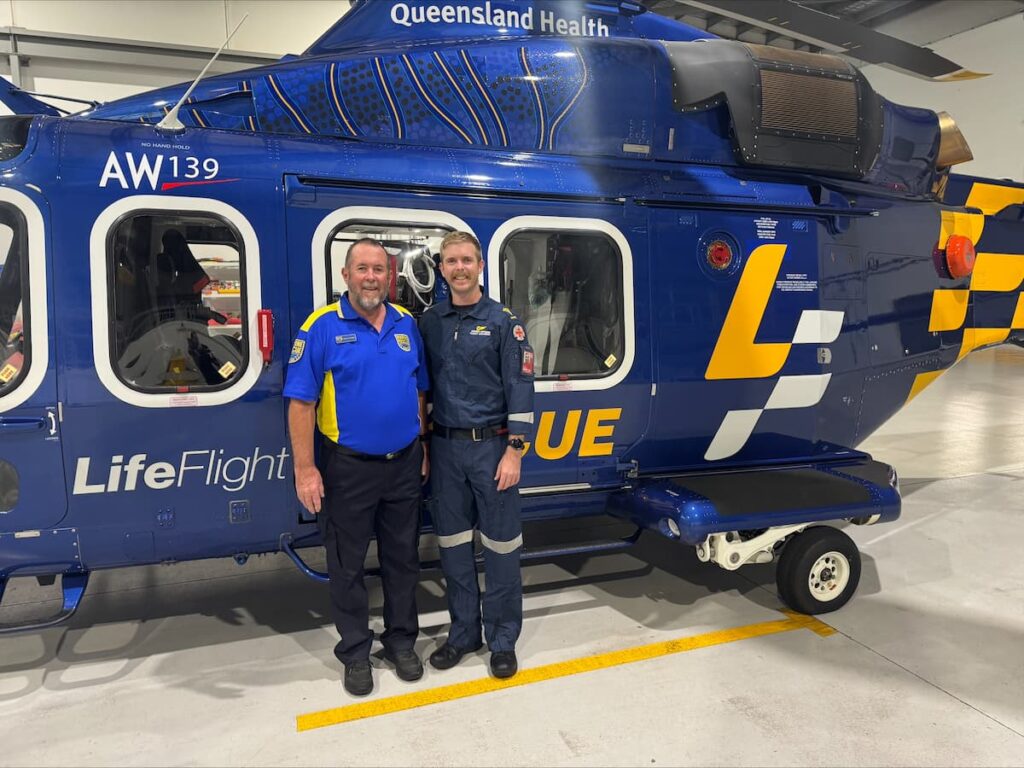Josh Ward’s fall down a two-metre hole in North West Queensland could have been fatal if it wasn’t for LifeFlight’s critical aeromedical service.
Josh was on a horse mustering cattle late in the afternoon when a beast broke away from the mob. The sun was low, which made it difficult for him to see, and he was travelling “fairly fast” to chase after it when he ran into a big, rocky, two-metre-deep hole in the ground camouflaged by long grass.
The Longreach local was helping his father-in-law at Mellish Park Station, 40km from Gregory Downs and 170km from Camooweal, three months ago today – on June 25, 2024.
With a slowly deflating, punctured lung, the fall left Josh struggling to breathe. The nearest hospital was four hours away.
“I fell very heavily on my left side,” he said. “I was laying there thinking: ‘you’re alright – you are just winded’. I managed to get myself up on my feet and that was excruciating.
“I knew something was wrong,” he said. “So, I said: ‘right-t-o, can somebody please call somebody to help me?’”
When his mother-in-law, Bev, phoned the Royal Flying Doctor Service (RFDS) their advice was not to move him.
However, with the help of a colleague, Josh managed to get himself out of the hole and onto a quad bike and slowly drove around 500 metres through the paddock to the main access road to the Station.
Josh tried using the green whistle from the RFDS chest that every remote station keeps, but recalled it offered little relief.
“To be honest, it didn’t do a lot for the pain,” Josh said.
The LifeFlight helicopter pilot wore night vision goggles and was able to land in the paddock next to Josh, guided by the headlights of two cars.
The Queensland Ambulance Service (QAS) critical care flight paramedic gave Josh a shot of ketamine that quickly eased his pain.
“That kicked in pretty quickly and they were able to get me to the helicopter just on the buggy with the flight paramedic walking beside me,” Josh said. “They put me on a stretcher, got a drip into my arm for more pain killers and then they flew me to Mt Isa Hospital.”
It’s not the first time his family has needed an aeromedical team.
“In our line of work, accidents happen all the time,” he said. “Working up in this part of the world, we rely on organisations like LifeFlight and the Royal Flying Doctors Service.
“My brother-in-law ruptured his spleen and fractured ribs when a horse bucked and my father-in-law was also injured with fractured ribs, a smashed tail bone and a cracked pelvis when a horse rolled on him.
“We wouldn’t be able to survive up here without organisations like LifeFlight. It’s just amazing what they do. They were excellent – you couldn’t have wished for a better service.”
LifeFlight is currently fundraising to ensure every LifeFlight helicopter aeromedical team has access to state-of-the-art night vision goggles. www.lifeflight.org.au/NVG











